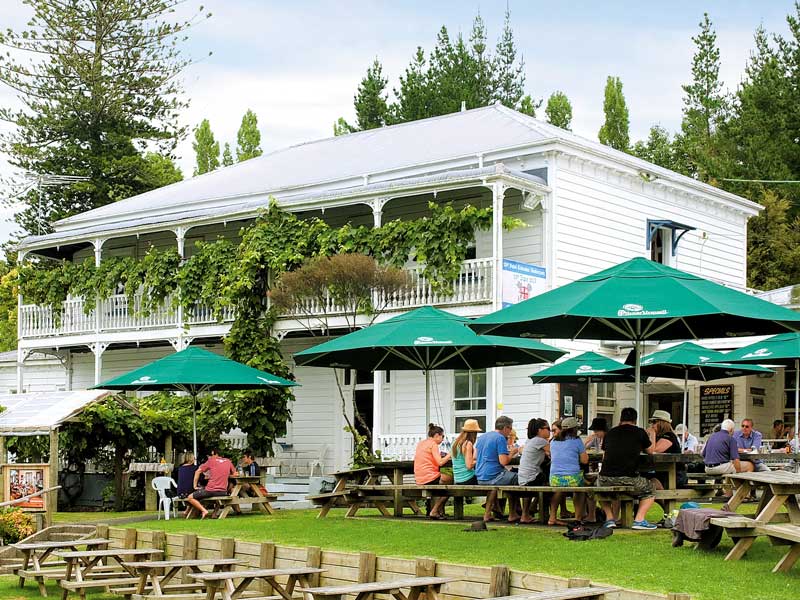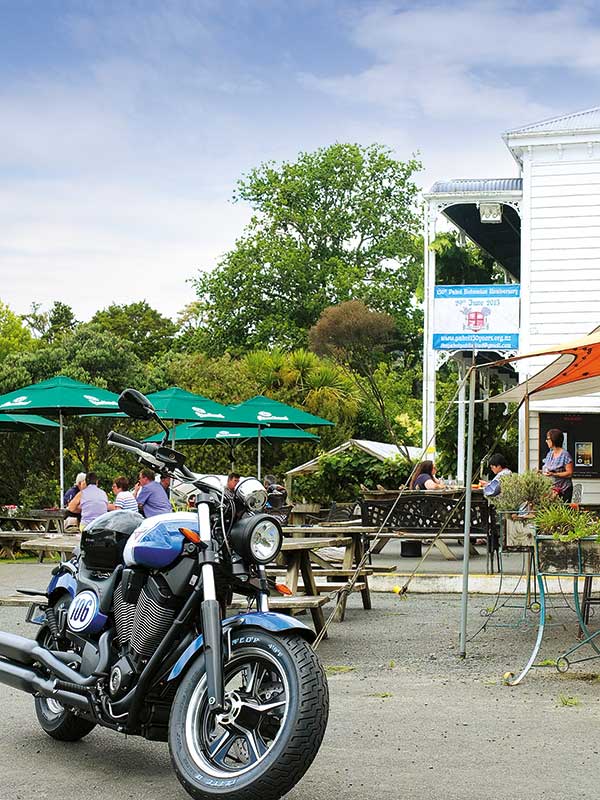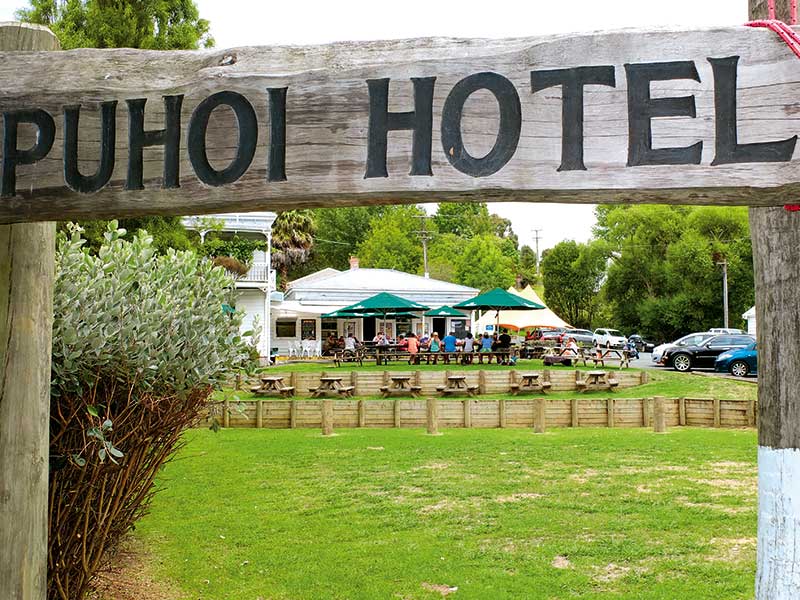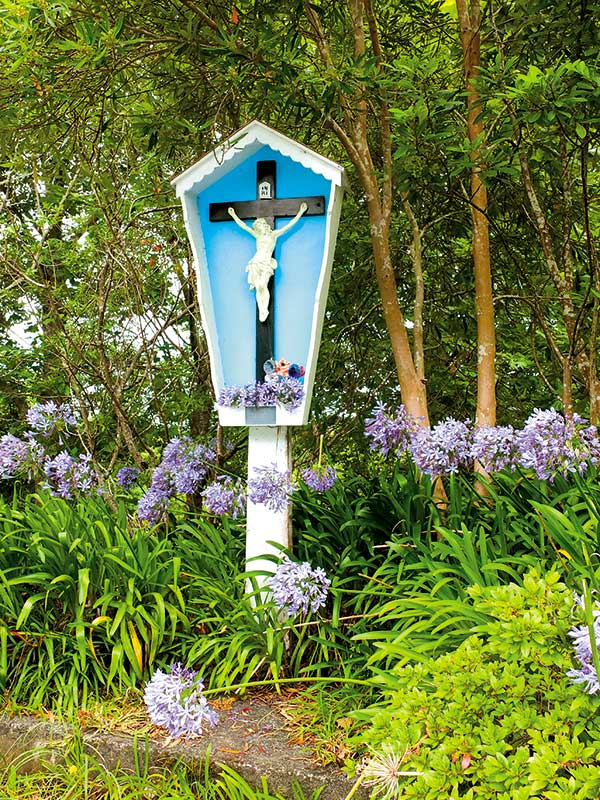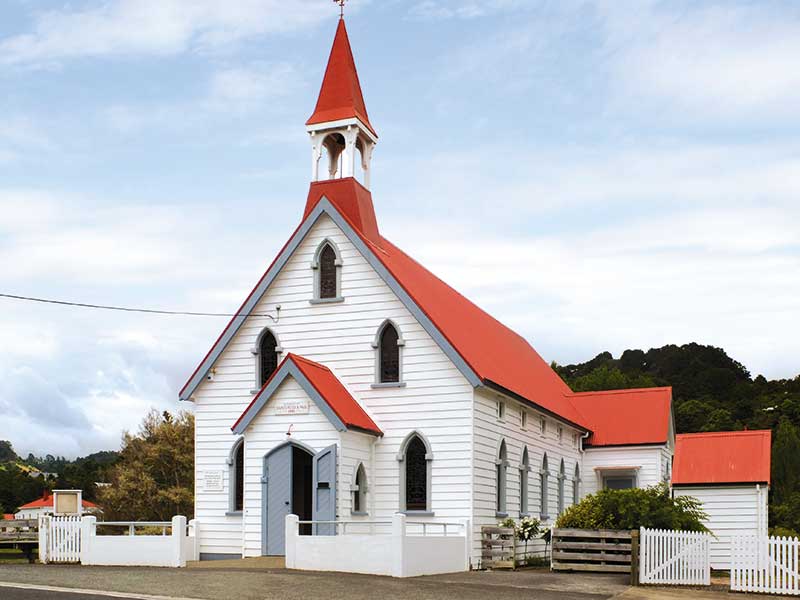On the side of the road, just before entering the village, stands a crucifix shrine. That’s something you don’t see much in New Zealand but in Puhoi, just half an hour’s drive north of Auckland, it symbolises the faith in the Catholic Church that enabled the earliest settlers from Bohemia to endure.
That was in the 1860s. Go there today and the Puhoi they gradually carved from the bush is the picturesque European-style village that the immigrants had in mind when they left Bohemia for the promise of greener pastures.
The bullock teams have long made way for the motorbikes and gleaming vehicles that bring visitors, sometimes in droves, seeking the pleasures of the old pub, the new cafes and the quiet country air.
And yet, the remarkable pioneers’ stories remain the greatest draw. All villages and towns have interesting histories but in Puhoi it hits you in the face. Wherever you turn there is acknowledgement of those bitter, despairing, early days when any sort of pleasure was hard to find.
In today’s gently dipping village surrounded by soft pastureland and groves of exotic trees, I found it hard to conjure up what it must have been like for the first arrivals. They’d come half way around the world in anticipation of a Utopia and were paddled by Maori up the dark Puhoi River to be greeted by quite a different reality – just two nikau huts in the forbidding forest.
A fellow countryman, Captain Martin Krippner of the Austrian Army, had previously emigrated to New Zealand and settled in Orewa. It must have been tough for him too, for his attempts at farming failed – and yet he’d written home urging others to follow.
The village is set between the river on one side and pastured hills on the other. Many of its important buildings still stand. Foremost among them is the simple Church of Saints Peter and Paul dedicated in 1881. I sat in the silence of its Spartan interior. Effigies of holy figures were the only other presence. Under each simple stained glass window I read the names of some of the earliest settlers: Schischka, Straka, Schollum, Wenzlick… In the village those names still reverberate today.
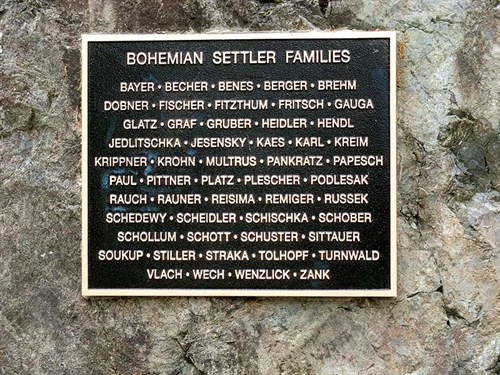
Next door is the convent school, which closed in the 1960s and now houses the community museum. Annoyingly, every time I’ve been to Puhoi it’s been closed.
Set back from the road are villas standing in paddocks dotted with sheep. There is tiny one-room library, a community hall, the striking, two-storied colonial Puhoi Hotel, and the old stables across the road. Many of the other buildings have disappeared – the smithy, the bootmakers, two more hotels, the public school and the saleyards. A few others have appeared including a recent small housing subdivision.
It is surprising that the little library survived. Perched on the bank of the river, it’s been flooded several times.
By the 1920s, the struggle of the first settlers was over and the village as it is today was beginning to emerge. On a recent visit, as I sipped a Lion Red in the old pub, I took a history tour through the old photographs, cards, and handwritten notes plastered on the walls, and the detritus of the past in the logging handsaws, saddles, stuffed birds, bullock horns, shovels and cast-iron pots. The original kauri fittings, the history and eclectic crowds of visiting patrons all added to the unique atmosphere of the place.
Before they left home, the Bohemians had been promised a land flowing with milk and honey. One-hundred-and-fifty years later, what turned out to be a myth for them is today a reality. Just past the Puhoi turnoff from SH1 Is the Honey Centre abuzz with honey products such as mead, hand cream, honey ice-cream, and lip balm. With a cafe, free tasting and glass fronted hives, it makes a good pit stop on the way north.
Staying over
Wenderholm Regional Park is a beautiful reserve, shaded by pohutukawa and exotic trees with a safe surf beach and the gently flowing estuary. Overnight camping for CSC vehicles is allowed by the beach for one night. The cost is $8pp. Call the ranger from the phone booth at the parking area.
Read the full review in issue #140 of Motorhomes Caravans & Destinations magazine (on sale now!). Subscribe here.

